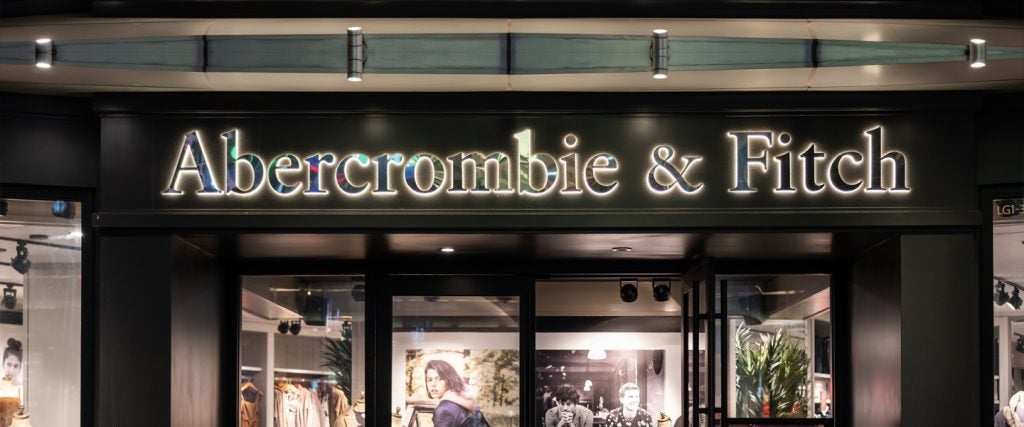It may surprise you to learn that Abercrombie & Fitch began as an outfitter for elite outdoorsmen. In the early 1900s, the company was particularly known for its expensive shotguns, fishing rods, fishing boats and tents. At one point, it even equipped Teddy Roosevelt for a safari. Ernest Hemingway was an Abercrombie stan, too.
By the 1970s though — once the fashion industry was flooded with low-priced options and fewer people were willing to pay a premium for clothes — Abercrombie knew it had to change course. The result of that new direction was the preppy mall brand that became Abercrombie’s calling card for the next 30 years.
But over the last decade, that approach has worn out its welcome as well. The impossible-to-miss Abercrombie logo became a joke. The mall rat became a relic. And the shirtless models that perched outside the store became highly problematic. “It was pretty weird for a clothing company to have so many pictures of people not wearing any IMHO,” one subscriber to the Male Fashion Advice (MFA) subreddit recalls. To say nothing of “Fierce,” the Abercrombie & Fitch cologne, which could overpower even the most fragrant of Sbarros. “That cologne smell haunts my dreams,” a different MFA subscriber tells me.
In 2017, the company’s stock price dropped from an all-time high of $84.23 to under 10 bucks a share. The writing was on the wall: It was time for another pivot. Per Business Insider, Abercrombie ditched its “privilege and the prep for a more down-to-earth look.” Along those lines, Carey Collins Krug, Abercrombie Brands’ senior vice president and head of marketing, told Teen Vogue in November, “Over the past few years, we’ve been laser-focused on listening to our customers, and TikTok has been the perfect platform for fostering that communication.”
It might not be TikTok, but much to the surprise of the men of r/MaleFashionAdvice — a focus group that numbers more than 3.5 million — they have found the new Abercrombie to be “good now in terms of both quality and value (especially with Uniqlo going downhill).” “I recently stumbled into an Abercrombie looking for a hoodie before a flight, and they actually had a plain black hoodie with the double zips!” a member recently wrote. “It’s a feature you usually only see in pricier items. I love it, and the price was pretty fair. I was surprised by how understated it had become since all the terrible moose logos and sexual pun tees I remember growing up with. I’m definitely going back!”
“I purchased some sweat shorts at Abercrombie after a post here, and they’re now my favorite shorts,” another adds. “I’ve gone down a rabbit hole of buying a ton of plain tees from them.”
Of course, Abercrombie doesn’t get a pass from everyone on the sub. Its new styles are deliberately watered-down and nondescript. “We start with aspiration and then we filter it down,” Abercrombie designer Aaron Levine told GQ back in 2018, as the brand first embarked upon its revamp. To which one MFA member retorts, “At least the old Abercrombie & Fitch had the courage and temerity to plug itself into an identity, repellent though it was. Aaron Levine seems to leave a trail of torpid but serviceable collections, and every time I see it, it lights up a little lizard part of my brain that says ‘Nice!,’ which is immediately followed by, ‘Why would I spend any closet space on this when the world is so full?’”
Therein lies the rub. Today, Abercrombie & Fitch is completely inconspicuous and indistinguishable from other mall brands — with the same kind of washed-out crewneck sweaters, skinny chinos and oversized cardigans you can find pretty much anywhere else outside of the food court (or online via drop-shipping). Does this make it good, more with the times or just plain shrewd?
Probably all of the above. But I’m not sure that’s even the right question. Or that this is really about Abercrombie. In the end, it says as much about the modern consumer as it does Abercrombie. In the realm of fast fashion at least, familiarity and price seem to win the day — no logos or personality required.

